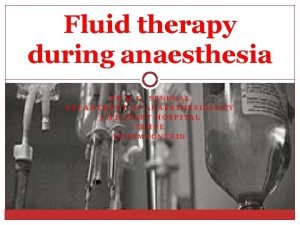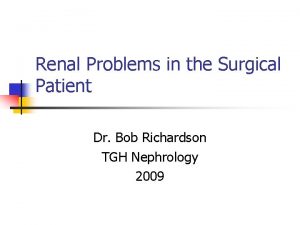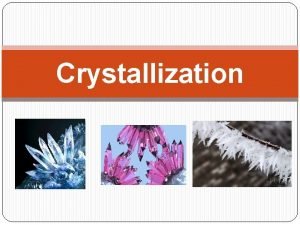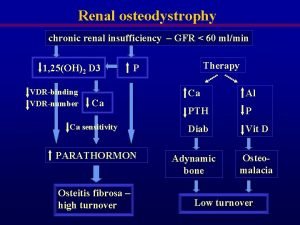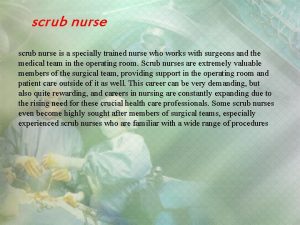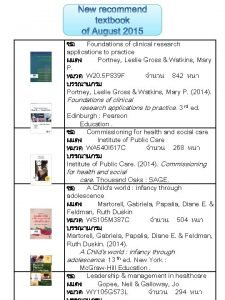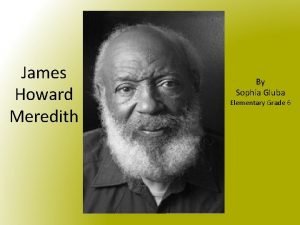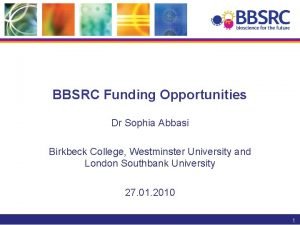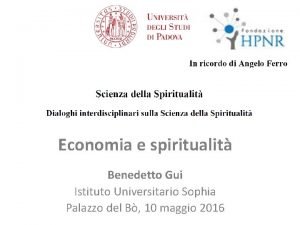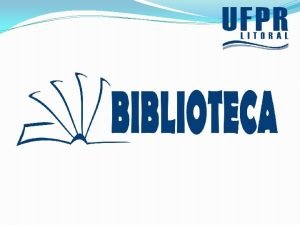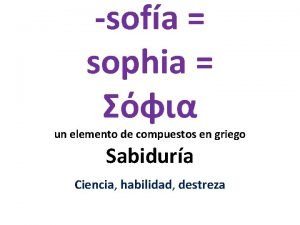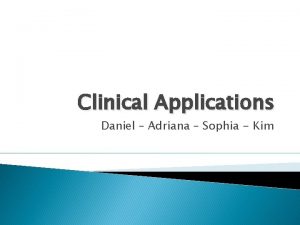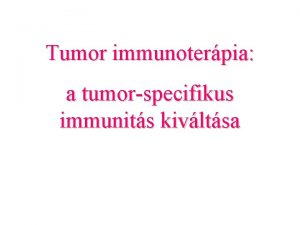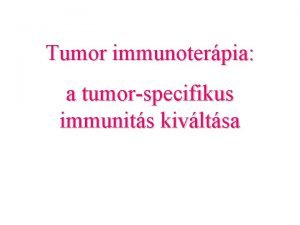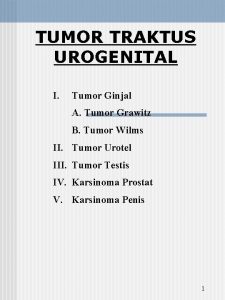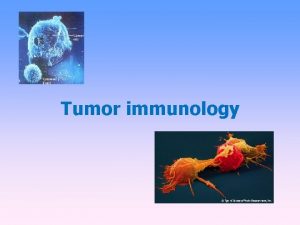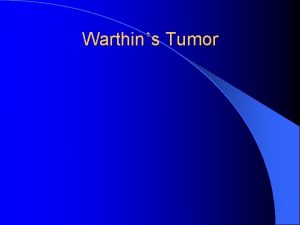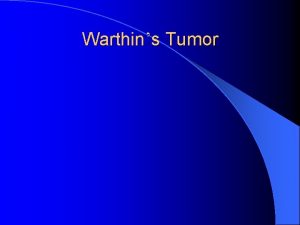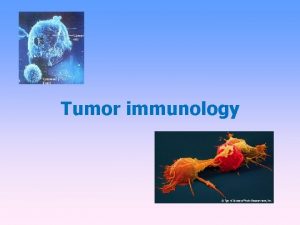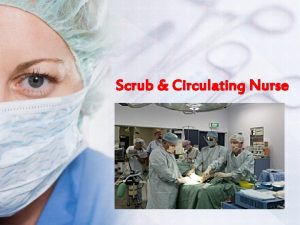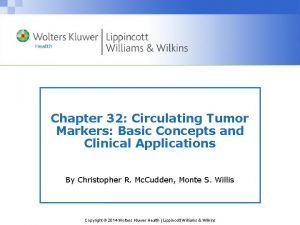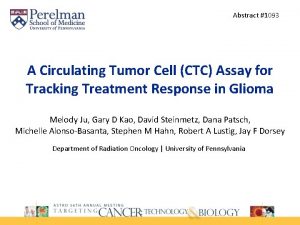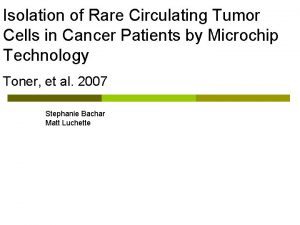Clinical Applications Daniel Adriana Sophia Kim Circulating Tumor


















- Slides: 18

Clinical Applications Daniel – Adriana – Sophia - Kim

Circulating Tumor DNA Kim Dehling

Definition � � � tumor-derived fragmented DNA in the bloodstream that is not associated with cells may reflect the entire tumor genome originates directly from the tumor or from circulating tumor cells (CTCs)

In Contrast: CTCs � CTCs are shed from either primary or secondary tumor sites migrate into blood � extremely rare � widespread in cancer research � large size multiple methods to extract them ◦ include erythrocyte lysis, cell centrifugation & washing may lead to insufficient capture or cell damage � � epigenetic silencing in promoter regions of tumor suppressor genes can be clearly confirmed in CTCs Clinical Application ◦ prostate cancer: prostate-specific antigen (PSA) & prostate-specific membrane antigen (PSMA) possible predictors of response to antiandrogenic therapy ◦ NSCLC: epidermal growth factor receptor (EGFR) point mutations are successfully targetable by TKIs ◦ high-methylation profiles significantly correlate with BRAF mutations (poorer prognosis in colorectal CA)

Pre-analytical considerations � Plasma is preferred over serum no contamination of cf. DNA by genomic DNA derived from lysis of leukocytes ◦ cell stabilization tubes (not EDTA) � if EDTA: process sample to plasma within 2– 4 h � no heparinised tubes ◦ heparin inhibits PCR by mimicking helical structure of DNA � temperature increase of cf. DNA if at room temperature

Clinical Application � ct. DNA provides useful baseline information ◦ subclinical conditions of patients ◦ cases of unknown neoplasms that correlate with specific mutations � � characteristics of ct. DNA are the mirror of the tumor’s molecular profile consider treatment options liquid biopsy is approved for clinical practice use only in NSCLC

Non-Blood Liquid Biopsy Sophia Kalem

Definition � � � less invasive routinely done in CNS lymphoma, medulloblastoma, germ cell tumours In patients who have a tumour that cannot be approached surgically, lumbar puncture offers an opportunity to obtain a molecular signature and potentially a definitive diagnosis cheaper than brain tumor biopsy can be done on a larger scale -> clinical research looking for ct. DNA (circulating tumor DNA)

Study � performed to research the effectivity of liquor biopsy in brain tumors � CSF from 85 patients with gliomas (agressive brain tumor) � diagnosis of glioma had been established by prior tumour biopsy or resection � All patients had received treatment for glioma before CSF collection, including surgery, radiation, and at least one systemic tumourdirected chemotherapy � tumour-derived DNA was detected in CSF from 42 out of 85 patients (49. 4%)

Processing � Isolation of ct. DNA � Isolation of tumour and germline DNA � Targeted capture and sequencing � Comparison of genomic alterations in CSF and tumour � Statistical analysis

Outcome � study shows that tumour-derived DNA in CSF from patients with glioma provides a comprehensive and genetically faithful representation of the tumour genome at the time of the CSF collection. � The frequency and type of alterations in the CSF closely resembled the genomic landscape of diffuse glioma � observed high concordance between CSF and tumour DNA in patients who underwent both lumbar puncture and neurosurgical tumour resection within a few weeks

NGS in pre-natal diagnostics Adriana Ključarić

Screening test - Drawing blood from a pregnang woman and analyzing DNA that is found in the bloodstream outside the cells - Some of this cell- free DNA comes from the fetus and is transferred from placenta to the bloodstream - (~13% of cell-free DNA isolated from maternal plasma during pregnancy is fetal in origin)

� Origin of cff. DNA: placental trophoblast � Analysis: no associated risk of spontaneous abortion � - has to be backed up with tests such as amniocentesis or chorionic villi sampling

Circulating Fetal Cells sequencing for prenatal testing study � 95 women ( Texas and NY), between 8 and 13 weeks pregnancy � Separation of single circulating trophoblast from the rest of the blood (magnetic- activated cell sorting using antibodies attached to magnetic beads to grab hold of the cells with the corresponding antigens) � Analyzing the cells by using whole- genome sequencing to detect abnormal numbers of chromosomes or variation in the copy of number of genes � � � Reliability 96% 2 trophoblasts for every 10 milliliters of blood To detect and analyze individual trophoblast ~ $3000

NGS in newborn child by Daniel Huebner

DBS � Dried blood spot sampling � used to screen fo congenital metabolic disases � has been preformed for over 50 years � can be tested for than 50 seperate analytes � broad spectrum of analysis due to usage of mass spectrometry

circulating tumor DNA Advantages less invasive than lumbar puncture mirror of the tumor’s molecular profile targeted approach specific genes and mutations detection of minimal residual disease (MRD) • pre-analytical considerations use of various amplification and sequencing methods • untargeted approach all genes (more expensive, lower resolution) • approved for clinical practice use only in NSCLC • • • Disadvantages non-blood liquid biopsy • • • NGS in pre-natal diagnostics less invasive than brain surgery cheaper easy to perform can be used if tumor is not surgically approachable reliable DNA results that match with the tumor • less invasive then amniocentesis and chorionic villus sampling not be used as the only diagnostic method needs futher studies to back up the results • high cost • not 100% accurate (still requires confirmation) • approximately 2 trophoblast per 10 ml of blood • cells can be at a different stage in life cycle (dividing/replicatin g DNA, apoptosis…) affects the results of sequencing DBS • low volume requirements • easy to attain (few to no training required) • sample is easy to transport • when dry it is stable at ambient temperature • used for clinical and pre-clinical pharmacokinetic studies • analysis that requires intact whole cells or measures volatile analytes • many hours are required for the sample to dry contamination • drying rate can be variable • proper application of blood to the filter paper
 Goddess styx
Goddess styx What is effective circulating volume
What is effective circulating volume What is effective circulating volume
What is effective circulating volume Circulating magma vacuum crystallizer
Circulating magma vacuum crystallizer What is effective circulating volume
What is effective circulating volume Single phase dual converter waveform
Single phase dual converter waveform What is effective circulating volume
What is effective circulating volume The circulating assistant is usually not responsible for
The circulating assistant is usually not responsible for Role of scrub nurse
Role of scrub nurse Foundations of clinical research applications to practice
Foundations of clinical research applications to practice James meredith early life
James meredith early life Sophia pandey
Sophia pandey Sophia shao
Sophia shao Fileo sophia
Fileo sophia Sophia abbasi
Sophia abbasi Benedetto gui
Benedetto gui Bisistema
Bisistema Sophia duval
Sophia duval Sophia en griego
Sophia en griego

